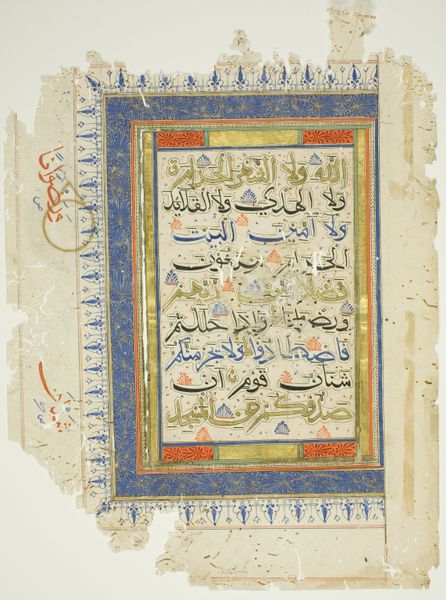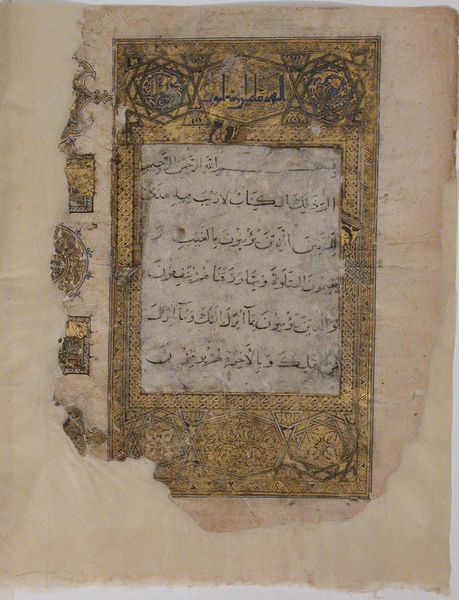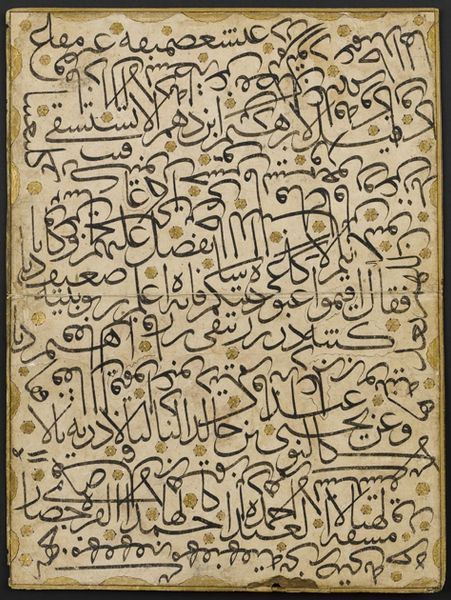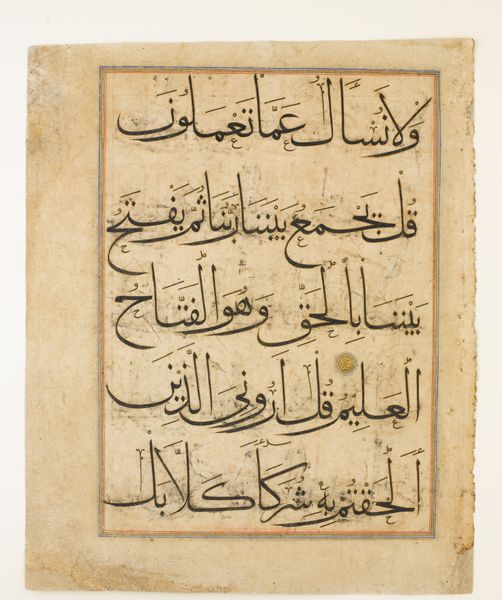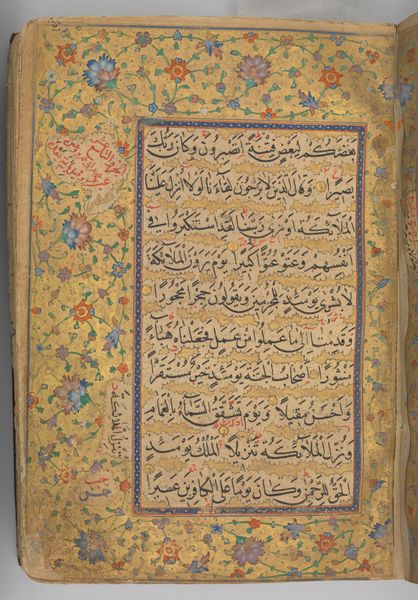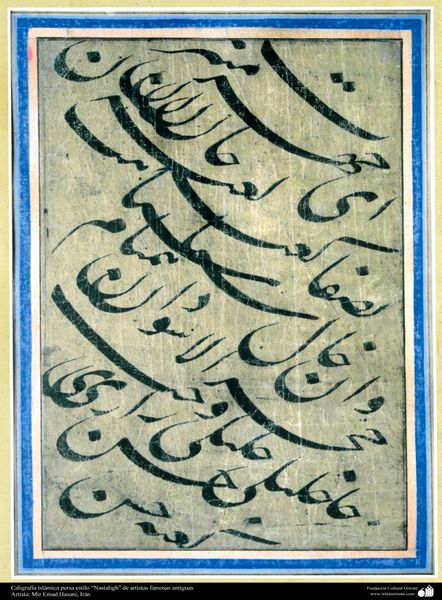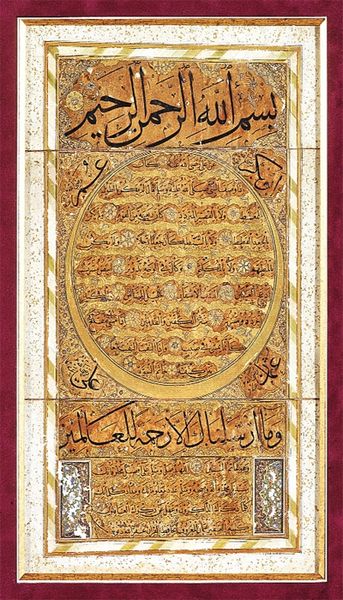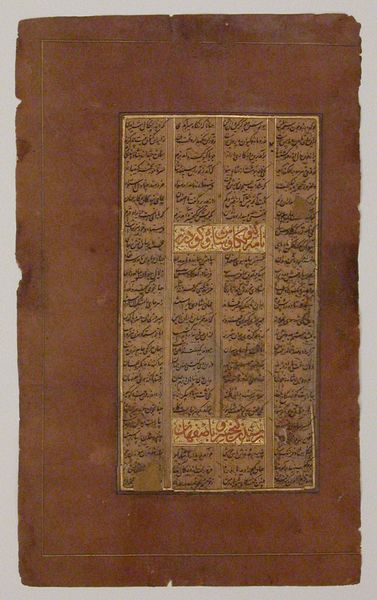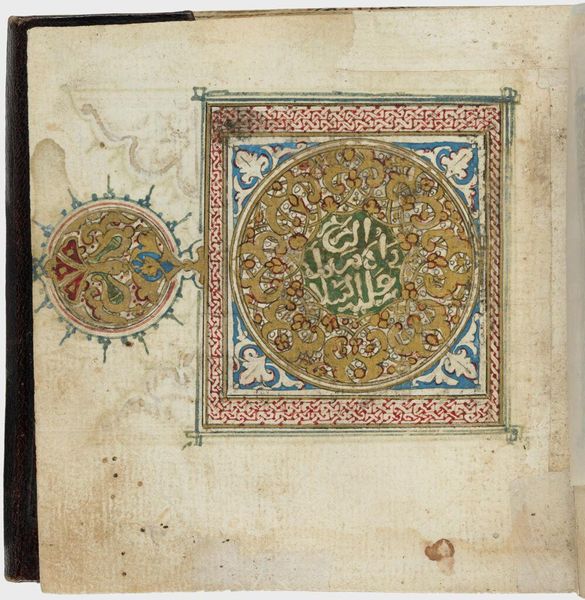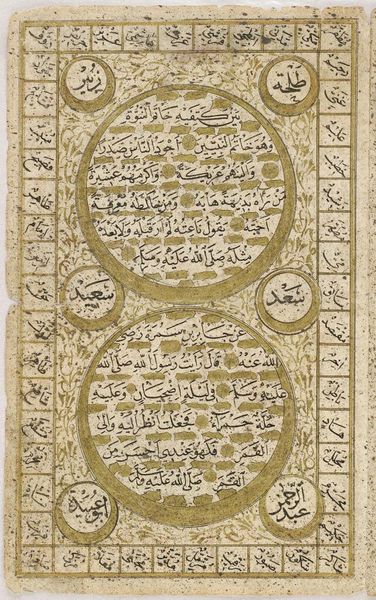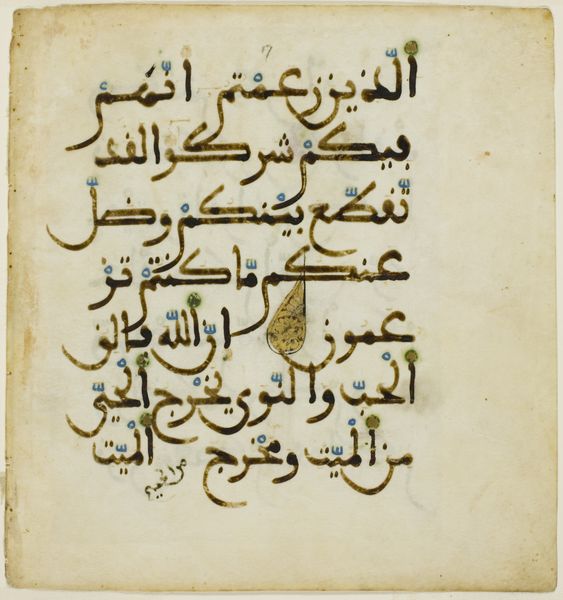
relief, ceramic
#
asian-art
#
relief
#
ceramic
#
islamic-art
#
calligraphy
Dimensions: 36.9 × 24.7 × 3.2 cm (14 1/2 × 9 11/16 × 1 1/4 in.)
Copyright: Public Domain
Curator: This striking ceramic relief tile, originating sometime between 891 and 1507, served as a tombstone. Islamic art often integrates calligraphy so the lettering you see is as important as the symbolism and geometric patterning, offering layered insight into the commissioner’s identity and religious views. Editor: Oh, wow. I’m immediately struck by its serene palette – pale blue bordering an earthy ochre. Despite being a fragment of the past, it feels remarkably fresh, like a piece of sky cradling ancient secrets. Curator: Exactly. We see that the calligraphy is central here, a devotional inscription in Arabic, conveying details about the deceased, whose name was Sa’id Ibnak Muhammad. But the script also reflects the sociopolitical power structures of the time period and the role of artistic expression within these dynamics. The placement, the form...they're all loaded. Editor: It reminds me that even in remembrance, identity is actively constructed, right? I mean, someone chose those words, that style... It speaks to the universal human desire to be remembered, to leave a mark, but with a very particular cultural spin. Almost like composing your own eulogy. Curator: Precisely. Tombstones offer insight into a community's value system concerning gender, social standing, even religious doctrine. Consider this tombstone within that context; we understand it to be more than simply an inscription. The artistic presentation is key, adding to the complexities of understanding personhood and power dynamics. Editor: It also highlights art’s ability to immortalize…in a way. This tile allows a fleeting life to resonate across centuries, whispering stories of faith, artistry, and mortality. What else can ceramic do that for you, you know? Makes you wonder who is seeing us through their art, down the line? Curator: Indeed, pondering the piece invites contemplation beyond mere identity; rather, a broader analysis of shared human practices over epochs of both loss and lasting artistic expression. It encapsulates historical narratives in very accessible strokes, that's for sure. Editor: Totally, a poetic encapsulation of life's ephemeral nature in this humble tombstone. Curator: I fully concur.
Comments
No comments
Be the first to comment and join the conversation on the ultimate creative platform.
